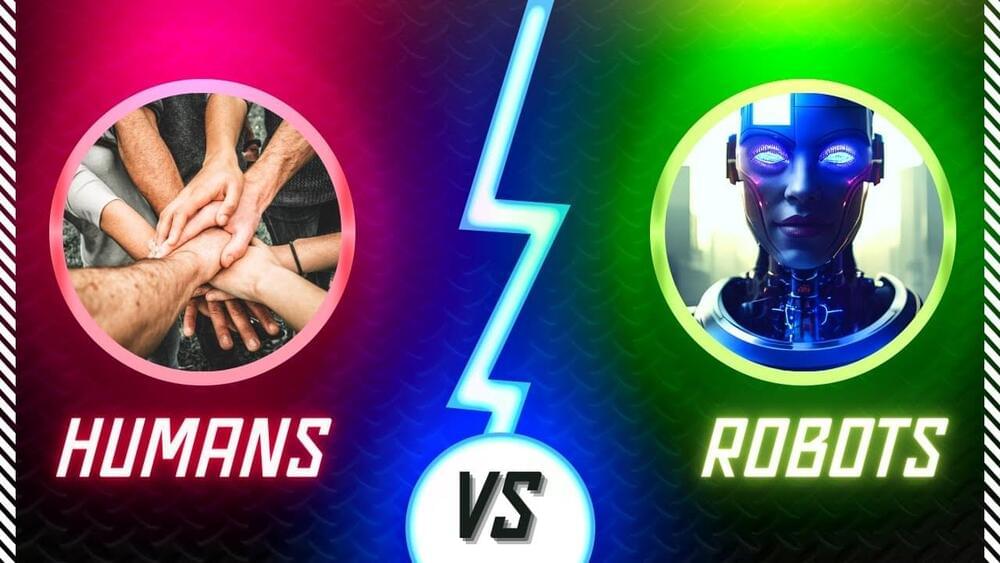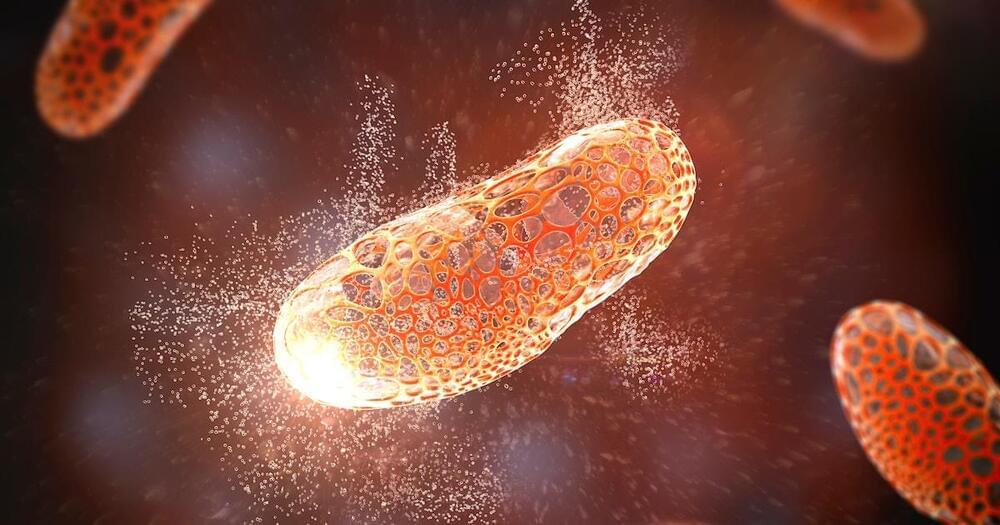Creating a map of the most complicated terrain in the universe requires a host of special technologies.

Creating a map of the most complicated terrain in the universe requires a host of special technologies.
Year 2021 Basically this could cure many diseases and even allow for better human devices to be created.
New devices — worn as headsets and backpacks — rely on optogenetics, in which bursts of light toggle neurons, to control mouse brain activity.

https://youtube.com/watch?v=r7-S31eA7mo
Welcome to our latest video on the future of artificial intelligence! In this episode, we’ll be exploring the question is.
AI a friend or an enemy, and will they be a potential threat to humanity?
Continue reading “Artificial Intelligence and the future of humans” »
Lung cancer is the third most common cancer in the United States, following skin and breast cancers– with over two hundred and thirty-six thousand cases diagnosed in 2022 alone, according to the American Cancer Society. The most significant risk factor includes smoking, with eighty to ninety percent of all lung cancer deaths being linked to smoking in the U.S. Other contributing factors include secondhand smoke, the inhalation of radon– a naturally occurring gas– and familial history of lung cancer.

Alpha Centauri, here we come.
However, while technology has indeed advanced a long way since the 1940s, it still seems like we are still a long way from having a fully functional von Neumann machine. That is unless you turn to biology. Even simple biological systems can perform absolutely mind-blowing feats of chemical synthesis. And there are few people in the world today who know that better than George Church. The geneticist from Harvard has been at the forefront of a revolution in the biological sciences over the last 30 years. Now, he’s published a new paper in Astrobiology musing about how biology could aid in creating a pico-scale system that could potentially explore other star systems at next to no cost.
Continue reading “Trillions of tiny, self-replicating satellites could unlock interstellar travel” »

Artificial intelligence can now make better art than most humans. Soon, these engines of wow will transform how we design just about everything.
A new type of room temperature sodium-sulfur (RT Na-S) battery could help solve the renewable energy storage problem.
Thus, our SUVI observations captured direct imprints and dynamics of this S-web in the middle corona. For instance, consider the wind streams presented in Fig. 1. Those outflows emerge when a pair of middle-coronal structures approach each other. By comparing the timing of these outflows in Supplementary Video 5, we found that the middle-coronal structures interact at the cusp of the southwest pseudostreamer. Similarly, wind streams in Supplementary Figs. 1 – 3 emerge from the cusps of the HCS. Models suggest that streamer and pseudostreamer cusps are sites of persistent reconnection30,31. The observed interaction and continual rearrangement of the coronal web features at these cusps are consistent with persistent reconnection, as predicted by S-web models. Although reconnection at streamer cusps in the middle corona has been inferred in other observational studies32,33 and modelled in three dimensions30,31, the observations presented here represent imaging signatures of coronal web dynamics and their direct and persistent effects. Our observations suggest that the coronal web is a direct manifestation of the full breadth of S-web in the middle corona. The S-web reconnection dynamics modulate and drive the structure of slow solar wind through prevalent reconnection9,18.
A volume render of log Q highlights the boundaries of individual flux domains projected into the image plane, revealing the existence of substantial magnetic complexity within the CH–AR system (Fig. 3a and Supplementary Video 7). The ecliptic view of the 3D volume render of log Q with the CH–AR system at the west limb does closely reproduce elongated magnetic topological structures associated with the observed coronal web, confined to northern and southern bright (pseudo-)streamers (Fig. 3b and Supplementary Video 8). The synthetic EUV emission from the inner to middle corona and the white-light emission in the extended corona (Fig. 3c) are in general agreement with structures that we observed with the SUVI–LASCO combination (Fig. 1a). Moreover, radial velocity sliced at 3 R ☉ over the large-scale HCS crossing and the pseudostreamer arcs in the MHD model also quantitatively agree with the observed speeds of wind streams emerging from those topological features (Supplementary Figs. 4 and 6 and Supplementary Information). Thus, the observationally driven MHD model provides credence to our interpretation of the existence of the complex coronal web whose dynamics correlate to the release of wind streams.
The long lifetime of the system allowed us to probe the region from a different viewpoint using the Sun-orbiting STEREO-A, which was roughly in quadrature with respect to the Sun–Earth line during the SUVI campaign (Methods and Extended Data Fig. 6). By combining data from Solar Terrestrial Relations Observatory-Ahead’s (STEREO-A) extreme ultraviolet imager (EUVI)34, outer visible-light coronagraph (COR-2) and the inner visible-light heliospheric imager (HI-1)35, we found imprints of the complex coronal web over the CH–AR system extending into the heliosphere. Figure 4a and the associated Supplementary Video 9 demonstrate the close resemblance between highly structured slow solar wind streams escaping into the heliosphere and the S-web-driven wind streams that we observed with the SUVI and LASCO combination. Due to the lack of an extended field of view, the EUVI did not directly image the coronal web that we observed with SUVI, demonstrating that the SUVI extended field-of-view observations provide a crucial missing link between middle-coronal S-web dynamics and the highly structured slow solar wind observations.
Leprosy is a chronic infectious disease caused by the bacterium Mycobacterium leprae. It affects the skin, nerves, and mucous membranes, and can lead to severe disfigurement and disability if left untreated.
Leprosy, a chronic infectious disease caused by the bacterium Mycobacterium leprae, is one of the oldest and most persistent diseases in the world. However, new surprising research suggests that the bacteria that cause leprosy may also have the ability to stimulate the growth and regeneration of the liver in adult animals without causing damage or scarring. Scientists have discovered that parasites associated with leprosy can reprogram cells to increase the size of the liver.
The findings suggest the potential to use this natural process to rejuvenate aging livers and extend the period of disease-free living in humans, known as healthspan. It may also be possible to use this process to regenerate damaged livers, potentially reducing the need for liver transplantation, which is currently the only effective treatment for individuals with severely scarred livers.
This year has seen remarkable developments in artificial intelligence, an inflection point for quantum computing, progress in aging research, a number of exciting discoveries in astronomy, a potentially revolutionary new material, and many more breakthroughs.
These were our top 20 most viewed blogs of 2022, in reverse order. See you in 2023!
